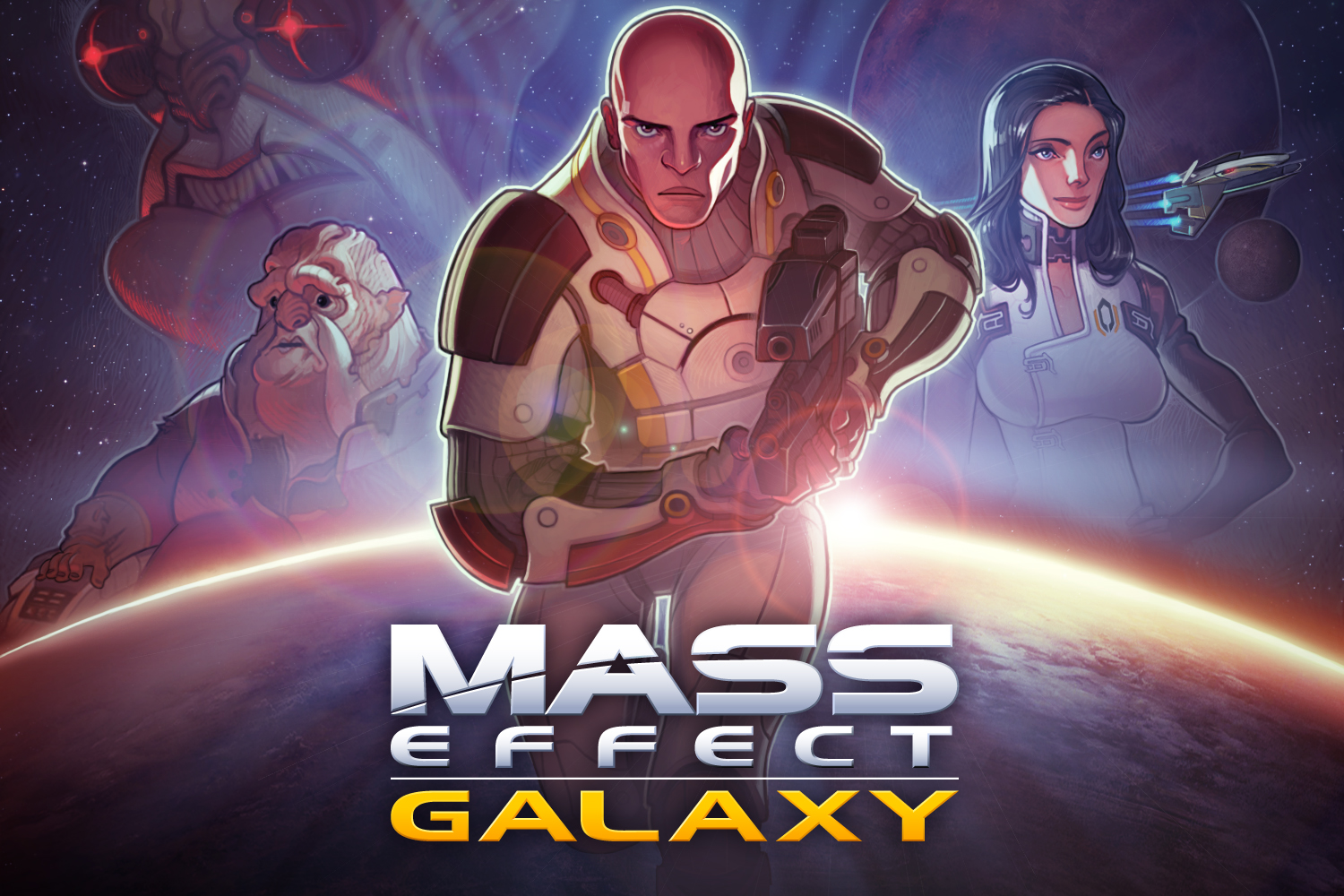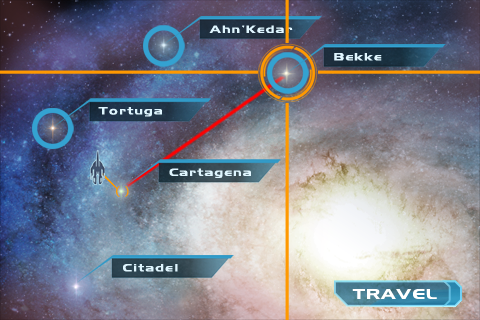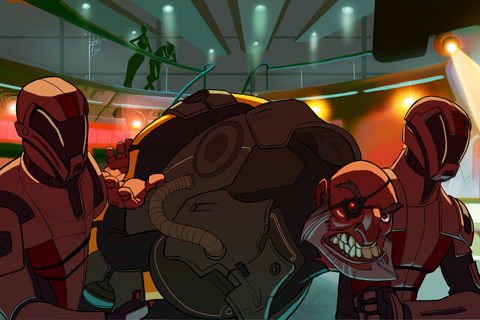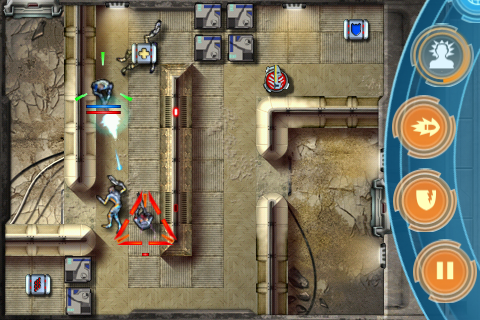
Part 1 of 1, by Jay Watamaniuk
BioWare has been making story-based games for about 15 years; almost an epoch in the relatively brief history of video games. We enter a new and crazy medium for telling stories with Mass Effect Galaxy whose existence was leaked a tad early some weeks ago by a fan who has since been processed into Soylent Green.
Since BioWare has not done a sequel for about 700 years we are all very excited to see a single game expand into something well beyond the original story. BioWare spends enormous amounts of effort to create these new worlds (well…an entire new universe in this case) and this is our first chance to keep exploring what’s out there and tell more stories.
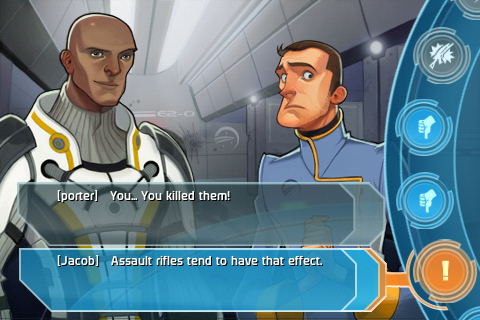 Mass Effect Galaxy is also a very cool leap into expanding the Mass Effect universe onto a new and innovative platform. I caught up with Executive Producer Kevin Barrett and Mass Effect Galaxy overlord a few questions on the game and its development:
Mass Effect Galaxy is also a very cool leap into expanding the Mass Effect universe onto a new and innovative platform. I caught up with Executive Producer Kevin Barrett and Mass Effect Galaxy overlord a few questions on the game and its development:
What is the connection of Mass Effect Galaxy to Mass Effect 2?
Barrett: Mass Effect Galaxy tells the background stories of two characters that will be encountered by the player in Mass Effect 2. The events of Mass Effect Galaxy take place between the time of Mass Effect 1 and Mass Effect 2, providing the player with more continuity for the ongoing story of the ME universe.
Why focus on Jacob Taylor’s story?
Barrett: Jacob is a Biotic-powered soldier in Mass Effect 2. We wanted to do a combat-oriented game on the iPhone/iPod touch, so Jacob was a strong candidate player character for us. He’s also a survivor of the geth attack on Eden Prime, so he’s an even more appropriate bridging character to link the events of ME1 with ME2.
What challenges did you encounter bringing a notoriously complicated BioWare game to this format?
Barrett: Our challenge was very much like trying to distill a full season mini-series down to a half-hour tv episode. Our response was to focus, focus, focus. Dialog had to be tight, the pace of conversations had to be quickened and our traditional “investigation dialog hubs” (where the player can ask questions about his current situation) were trimmed significantly. The resulting game has a very defined beginning, a middle with three branches, and an end sequence that takes the player to the final showdown with the game’s antagonist. The iPod touch and iPhone are pretty powerful game devices, but even so, we had to pick and choose how strongly we were going to pursue cinematics, voice over, special effects and so on. We figured that an animated 2D graphic novel-style presentation was the best way to tell our story on this device.
